OK, so you’ve got the core work covered for the term and now you have all those reports to write and admin to catch up on. Well, the OpenSTEM® Understanding Our World® HASS plus Science material has heaps of activities which help students to practise core curricular skills and can keep students occupied. Here are some ideas:
Aunt Madge’s Suitcase Activity

Aunt Madge is a perennial favourite with students of all ages. In this activity, students use clues to follow Aunt Madge around the world trying to return her forgotten suitcase. There’s a wide range of locations to choose from on every continent – both natural and constructed places. This activity can be tailored for group work, or the whole class, and by adjusting the number of locations to be found, the teacher can adjust to the available time, anywhere from 10-15 minutes to a whole lesson. Younger students enjoy matching the pictures of locations and trying to find the countries on the map. Older students can find out further information about the locations on the information sheets. Teachers can even choose a theme for the locations (such as “Ancient History” or “Aboriginal Places”) and see if students can guess what it is.
Ancient Sailing Ships Activity

Students in Years 3 to 6 have undertaken the Ancient Sailing Ships activity this term, however, there is a vast scope for additional aspects to this activity. Have students compared the performance of square-rigged versus lateen sails? How about varying the number of masts? Have students raced the vessels against each other? (a water trough and a fan is all that’s needed for some exciting races) Teachers can encourage the students to examine the effects of other changes to ship design, such as adding a keel or any other innovations students can come up with, which can be tested. Perhaps classes or grades can even race their ships against each other.
Trade and Barter Activity
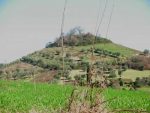 Students in years 5 and 6 in particular enjoy the Trade and Barter activity, which teaches them the basics of Economics without them even realising it! This activity covers so many different aspects of the curriculum, that it is always a good one to revisit, even though it was not in this term’s units. Students enjoy the challenge and will find the activity different each time. It is a particularly good choice for a large chunk of time, or for smaller groups; perhaps a more experienced group can coach other students. The section of the activity which has students developing their own system of writing is one that lends itself to extension and can even be spun off as a separate activity.
Students in years 5 and 6 in particular enjoy the Trade and Barter activity, which teaches them the basics of Economics without them even realising it! This activity covers so many different aspects of the curriculum, that it is always a good one to revisit, even though it was not in this term’s units. Students enjoy the challenge and will find the activity different each time. It is a particularly good choice for a large chunk of time, or for smaller groups; perhaps a more experienced group can coach other students. The section of the activity which has students developing their own system of writing is one that lends itself to extension and can even be spun off as a separate activity.
Games from the Past

Students of all ages enjoy many of the games listed in the resource Games From The Past. Several of these games are best done whilst running around outside, so if that is an option, then choose from the Aboriginal, Chinese or Zulu games. Many of these games can be played by large groups. Older students might like to try recreating some of the rules for some of the games of Ancient Egypt or the Aztecs. If this resource wasn’t part of the resources for your particular unit, it can be downloaded from the OpenSTEM® site directly.
Class Discussions
The b) and c) sections of the Teacher Handbooks contain suggestions for topics of discussion – such as Women Explorers or global citizenship, or ideas for drawings that the students can do. These can also be undertaken as additional activities. Teachers could divide students into groups to research and explore particular aspects of these topics, or stage debates, allowing students to practise persuasive writing skills as well.
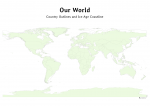 Adding events to a timeline, or the class calendar, also good ways to practise core skills.
Adding events to a timeline, or the class calendar, also good ways to practise core skills.
The OpenSTEM® Our World map is used as the perfect complement to many of the Understanding Our World® units. This map comes blank and country names are added to the map during activities. The end of term is also a good chance for students to continue adding country names to the map. These can be cut out of the resource World Countries, which supplies the names in a suitable font size. Students can use the resource World Maps to match the country names to their locations.
We hope you find these suggestions useful!
Enjoy the winter holidays – not too long now to a nice, cosy break!

 This week we are starting into the last stretch of the term. Students are well into their final sections of work. Our youngest students are thinking about how we care for places, slightly older students are displaying their posters and older students are giving their presentations.
This week we are starting into the last stretch of the term. Students are well into their final sections of work. Our youngest students are thinking about how we care for places, slightly older students are displaying their posters and older students are giving their presentations. Students in Years 3 (
Students in Years 3 (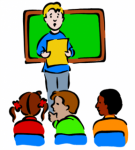 This week students are starting to round off their main body of assessable work for the term. Older students are completing and starting to present their presentations, while younger students have posters and models to finish off.
This week students are starting to round off their main body of assessable work for the term. Older students are completing and starting to present their presentations, while younger students have posters and models to finish off. Students in integrated Foundation/Prep/Kindy and Year 1 classes (
Students in integrated Foundation/Prep/Kindy and Year 1 classes ( Students in Year 3 (
Students in Year 3 (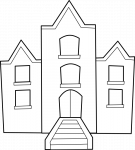 Foundation/Prep/Kindy to Year 3
Foundation/Prep/Kindy to Year 3 Students in Years 3 to 6 are continuing with their project on an explorer. Students in Year 3 (
Students in Years 3 to 6 are continuing with their project on an explorer. Students in Year 3 (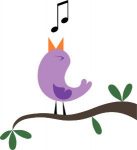 NAPLAN’s over and it’s time to sink our teeth into the main body of curriculum work before mid-year reporting rolls around. Our younger students are using all their senses to study the environment and local area around them, whilst our older students are hard at work on their Explorer projects.
NAPLAN’s over and it’s time to sink our teeth into the main body of curriculum work before mid-year reporting rolls around. Our younger students are using all their senses to study the environment and local area around them, whilst our older students are hard at work on their Explorer projects. Students in Years 3 (
Students in Years 3 (
Since implementing this program I've really noticed how the students are improving.
Trent Perry, Teacher